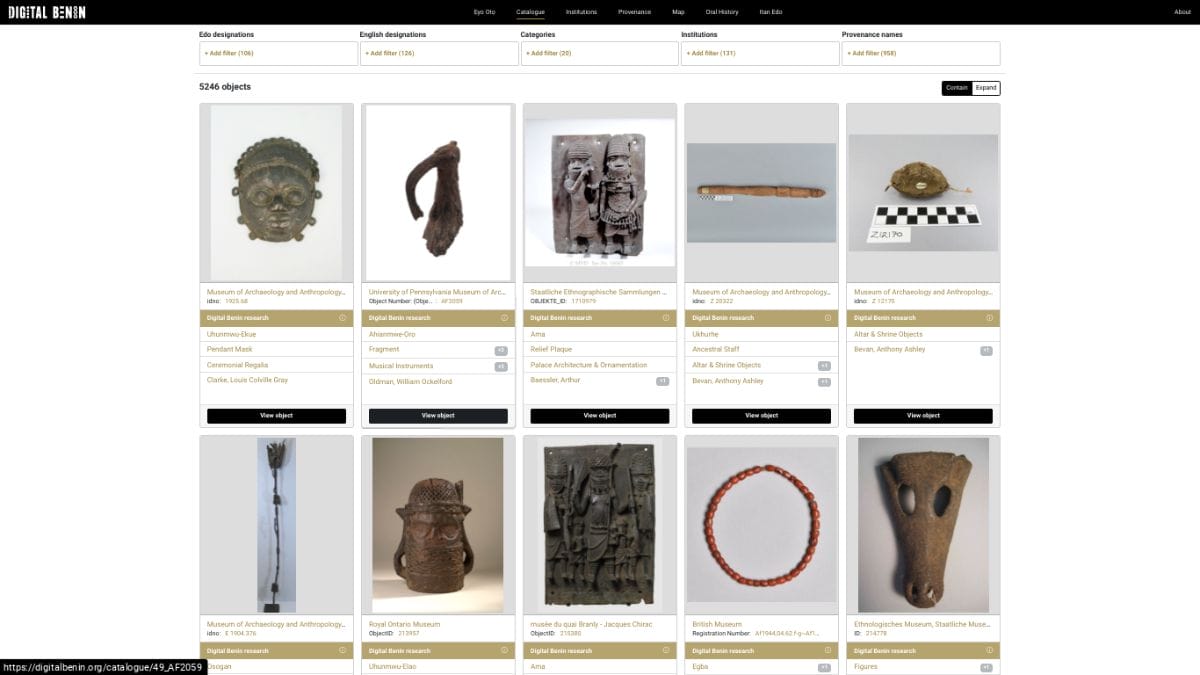As we move deeper into an era of smart technology we run the risk of losing touch with culture but Digital Benin could very well fix the problem. Nigeria as a country has a rich cultural heritage and the Benin people are one of the most prominent in rich cultural history. Ranging from its famous bronze figures to tales of past Obas, to beautiful cultural artefacts, the land of Benin is blessed with luscious heritage. Digital Benin’s effort to document this heritage is beyond commendable.
With the birth of newer generations, we find ourselves drifting away from our culture. To preserve the legacy of the proud people of Benin, Digital Benin was launched as a virtual museum with multifaceted uses. The platform aims to educate people on the region’s rich culture through various captivating means. Here is a review of Nigeria’s second ever virtual museum from Edo State.
Digital Benin at a glance

At first glance, Digital Benin is a well-designed website that is easy to use even for a complete internet novice. The website aims to teach the Benin culture in the most simple way possible with oral and visual aids.
The homepage is simple and displays all eight sections that detail the Benin culture. The homepage also tells more about the website’s aim and everything visitors will want to know about the new platform. All of this is displayed in a very simple and straightforward manner, making the page more user-friendly.
The first section of the Digital Benin website is Ẹyo Otọ which teaches about historic, symbolic and royal objects used by Edo indigenes and their significance. It also helps with their appropriate pronunciations. Following it is the Catalogue, which is a “central tool” of the website for bringing together all artefacts from various holding locations for viewing and study. Next is the Institution section that shows the various museums and holding facilities with Benin arts and how many each institute has in its possession.
The Provenance tab on this new website takes into consideration the various Benin objects and how they ended up in the possession of foreign museums. For now, the Digital Benin team is still conducting reviews of some more provenance data to come up with more accurate data for display on the site. The website embeds a Maps in it, which has a bearing on the various locations in Benin that contribute to the state’s cultural heritage.
Digital Benin’s map gives real-time data on the exact location of certain historic places. Areas such as the Oba’s palace, the Queen Mother’s Altar, various markets, historical towns or villages, and so much more are displayed across the map. Before going on a tour of Benin, I recommend taking a loot at the map or simply using it as a guide for where to make stops upon visiting the state.
The Oral section of the website is iconic in the way it details the Benin culture from indigenes and personalities knowledgeable about the Bíní culture. Here, those visiting the site can listen to these people talk about their rich cultural heritage. After the oral section, you are transported to Itan Edo. A section that documents the story of the Benin kingdom dating back to the period of the Ogiso dynasty. Last is the Media section that educates visitors on the Benin kingdom with images of artefacts, colouring books for children, and a video about the kingdom’s brief history.
Cultural relativism, well executed!

With this website, indigenes, visitors and immigrants alike can learn more about the culture of the Benin people from the comfort of their homes. From the beautiful, indigenous works of art to the Edo centric landmarks within the country and even their history, there is a lot to learn. This website does a brilliant job of breaking down an otherwise overwhelming amount of data into bite sizes. It also celebrates the different forms of cultural expression – art, language, education, etc.
Anyone and everyone can take to the Digital Benin website to learn more about the Benin people. It is simple, easy to navigate, and understandable by even those with little tech know-how. We hope to see this website in use across the country and beyond to draw people closer to our culture as a people.






